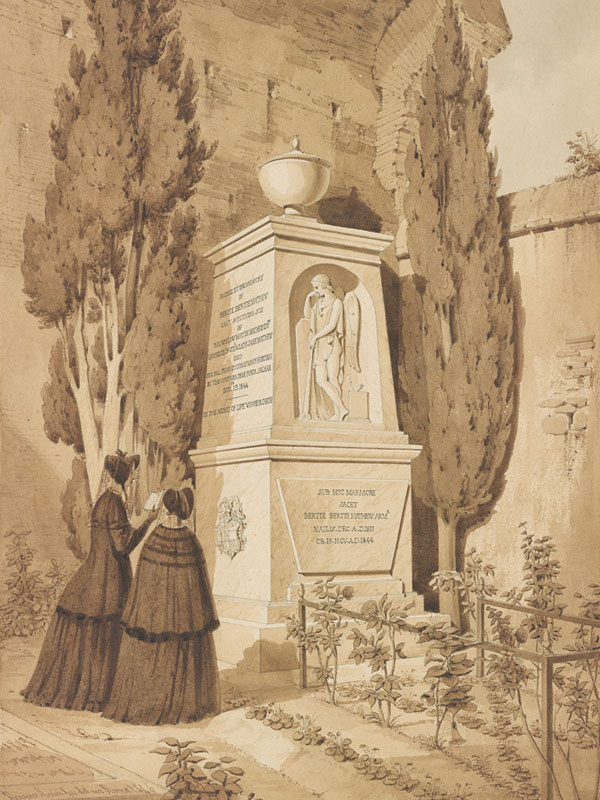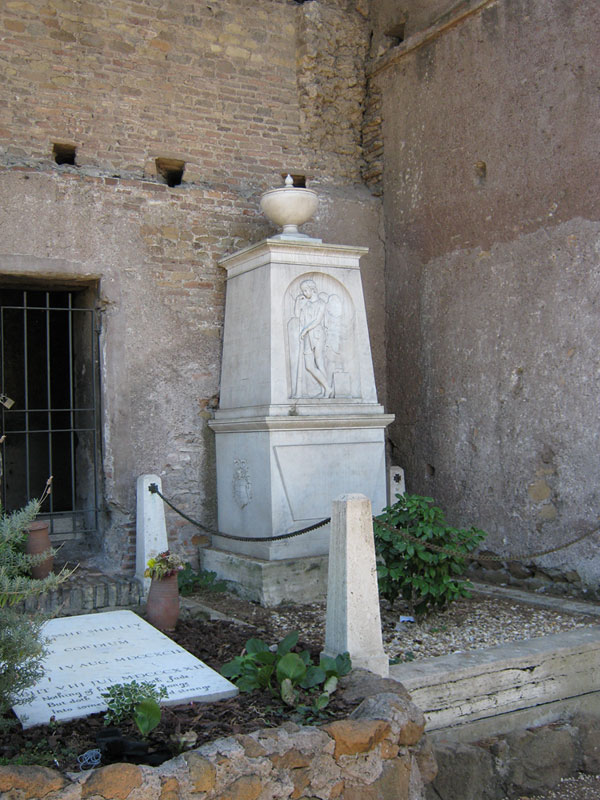
1851

2013
The English burying place is a green slope near the walls, under the pyramidal tomb of Cestius, & is I think the most beautiful and solemn cemetery I ever beheld. To see the sun shining on its bright grass fresh when we visited it with the autumnal dews, & hear the whispering of the wind among the leaves of the trees which have overgrown the tomb of Cestius, & the coil which is stirring in the sunwarm earth & to mark the tombs mostly of women and young people who were buried there, one might, if one were to die, desire the sleep they seem to sleep. Such is the human mind & so it peoples with its wishes vacancy & oblivion.
—Percy Bysshe Shelley, Letters, II, 487–488
